
The Seminole Wars were three related military conflicts in Florida between the United States and the Seminole, citizens of a Native American nation which formed in the region during the early 1700s. Hostilities commenced about 1816 and continued through 1858, with two periods of uneasy truce between active conflict. The Seminole Wars were the longest and most expensive, in both human and financial cost to the United States, of the American Indian Wars.

The Seminole are a Native American people who developed in Florida in the 18th century. Today, they live in Oklahoma and Florida, and comprise three federally recognized tribes: the Seminole Nation of Oklahoma, the Seminole Tribe of Florida, and the Miccosukee Tribe of Indians of Florida, as well as independent groups. The Seminole people emerged in a process of ethnogenesis from various Native American groups who settled in Spanish Florida beginning in the early 1700s, most significantly northern Muscogee Creeks from what is now Georgia and Alabama.

Osceola, named Billy Powell at birth in Alabama, became an influential leader of the Seminole people in Florida. His mother was Muscogee, and his great-grandfather was a Scotsman, James McQueen. He was reared by his mother in the Creek (Muscogee) tradition. When he was a child, they migrated to Florida with other Red Stick refugees, led by a relative, Peter McQueen, after their group's defeat in 1814 in the Creek Wars. There they became part of what was known as the Seminole people.
The Thumb is a region and a peninsula of the U.S. state of Michigan, so named because the Lower Peninsula is shaped like a mitten. The Thumb area is generally considered to be in the Central Michigan region, east of the Tri-Cities and north of Metro Detroit. The region is also branded as the Blue Water Area.
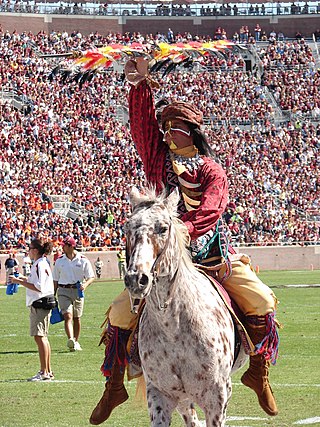
Osceola and Renegade are the official mascots of the Florida State University Seminoles. Osceola, representing the historical Seminole leader Osceola, and his Appaloosa horse Renegade introduce home football games by riding to midfield with a burning spear and planting it in the turf.
Lucia St. Clair Robson is an American historical novelist. She was married to science fiction novelist Brian Daley. She is a 1982 recipient of the Spur Award for Best Novel of the West.
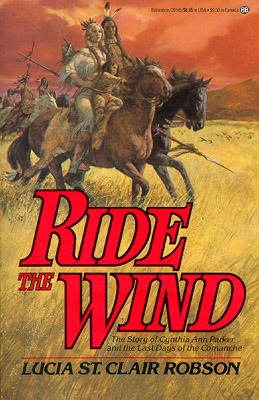
Ride the Wind (1982) by Lucia St. Clair Robson is the story of Cynthia Ann Parker's life after she was captured during the Comanche raid on her family's fort. In 1836, when she was nine years old, Cynthia was kidnapped by Comanche Indians. This is the story of how she grew up with them, mastered their ways, married one of their leaders, and became, in every way, a Comanche woman. Her son Quanah Parker was the last Comanche leader to surrender. It is also an account of a people who were happiest when they were moving, and a depiction of a way of life that is gone forever.
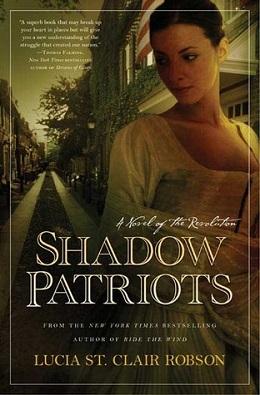
Shadow Patriots is 2005 historical novel by Lucia St. Clair Robson. It tells of the Culper Ring, a group of George Washington's spies operating out of New York City during the Revolution. The story includes familiar names—Washington, Alexander Hamilton, Benedict Arnold, Peggy Shippen—and one unfamiliar number, the mysterious Spy 355. 355 was the Culpers' code for "lady," and after 225 years she remains a nameless heroine who, many historians believe, died for her country.

Ghost Warrior, Lozen of the Apaches is a 2002 historical novel by Lucia St. Clair Robson. This novel was the runner-up for the Golden Spur Award in 2002.

Mary's Land, by Lucia St. Clair Robson, is a 1995 historical novel, set in the year 1638. It is based on Margaret Brent's life.
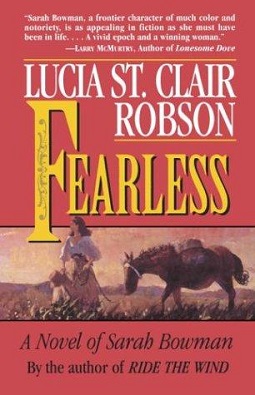
Fearless, A Novel of Sarah Bowman is a 1998 novel of historical fiction by Lucia St. Clair Robson.

Walk in My Soul is a 1985 historical novel by Lucia St. Clair Robson.
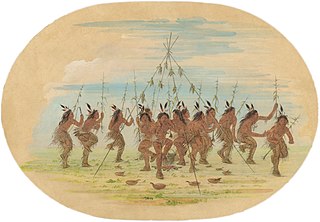
The Green Corn Ceremony (Busk) is an annual ceremony practiced among various Native American peoples associated with the beginning of the yearly corn harvest. Busk is a term given to the ceremony by white traders, the word being a corruption of the Creek word puskita (pusketv) for "a fast". These ceremonies have been documented ethnographically throughout the North American Eastern Woodlands and Southeastern tribes. Historically, it involved a first fruits rite in which the community would sacrifice the first of the green corn to ensure the rest of the crop would be successful. These Green Corn festivals were practiced widely throughout southern North America by many tribes evidenced in the Mississippian people and throughout the Mississippian Ideological Interaction Sphere. Green Corn festivals are still held today by many different Southeastern Woodland tribes. The Green Corn Ceremony typically occurs in late July–August, determined locally by the ripening of the corn crops. The ceremony is marked with dancing, feasting, fasting and religious observations.
The Mikasuki language is a Muskogean language spoken by around 290 people in southern Florida. Along with Muscogee, it is also known as Seminole. It is spoken by the Miccosukee tribe and many Florida Seminole. The extinct Hitchiti was a mutually intelligible dialect.
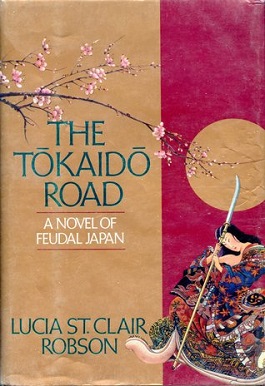
The Tokaido Road is a 1991 historical novel by Lucia St. Clair Robson. Set in 1702, it is a fictional account of the famous Japanese revenge story of the Forty-Seven Ronin. In feudal Japan, the Tōkaidō was the main road, which ran between the imperial capital of Kyoto, and the administrative capital of Edo.
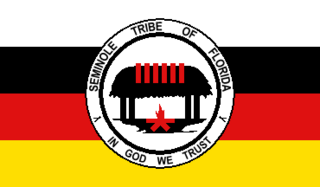
The Seminole Tribe of Florida is a federally recognized Seminole tribe based in the U.S. state of Florida. Together with the Seminole Nation of Oklahoma and the Miccosukee Tribe of Indians of Florida, it is one of three federally recognized Seminole entities. It received that status in 1957; today it has six Indian reservations in Florida.
Tribal-state compacts are declared necessary for any Class III gaming on Indian reservations under the Indian Gaming Regulatory Act of 1988 (IGRA). They were designed to allow tribal and state governments to come to a "business" agreement. A compact can be thought of as "negotiated agreement between two political entities that resolves questions of overlapping jurisdictional responsibilities Compacts affect the delicate power balance between states, federal, and tribal governments. It is these forms that have been a major source of controversy surrounding Indian gaming. Thus, it is understandable that the IGRA provides very detailed instructions for how states and tribes can make compacts cooperatively and also details the instructions for how the federal government can regulate such agreements.
The indigenous peoples of Florida lived in what is now known as Florida for more than 12,000 years before the time of first contact with Europeans. However, the indigenous Floridians living east of the Apalachicola River had largely died out by the early 18th century. Some Apalachees migrated to Louisiana, where their descendants now live; some were taken to Cuba and Mexico by the Spanish in the 18th century, and a few may have been absorbed into the Seminole and Miccosukee tribes.
Ferdinand Poulton, S.J, was a Jesuit missionary in the newly founded Jesuit Mission of Maryland. He was born to a noble family in either 1601 or 1603 in Buckinghamshire, England, and was educated at the College of St. Omer in Artois, France. He entered the English College of Rome in 1619 for his higher education and joined the Society of Jesus in 1622. He was back at St. Omer's in 1633 and at Watten, Nord, in 1636. He completed his initiation into the Jesuit order on December 8, 1635. To help hide his identity from anti-Catholic authorities Poulton, like other Jesuits, used aliases including Father John Brooks and John Morgan, an alias that his uncle, who was also named Ferdinand Poulton, had previously used.
The Mascogos are an Afro-descendant group in Coahuila, Mexico. Centered on the town of El Nacimiento in Múzquiz Municipality, the group are descendants of Black Seminoles escaping the threat of slavery in the United States.













